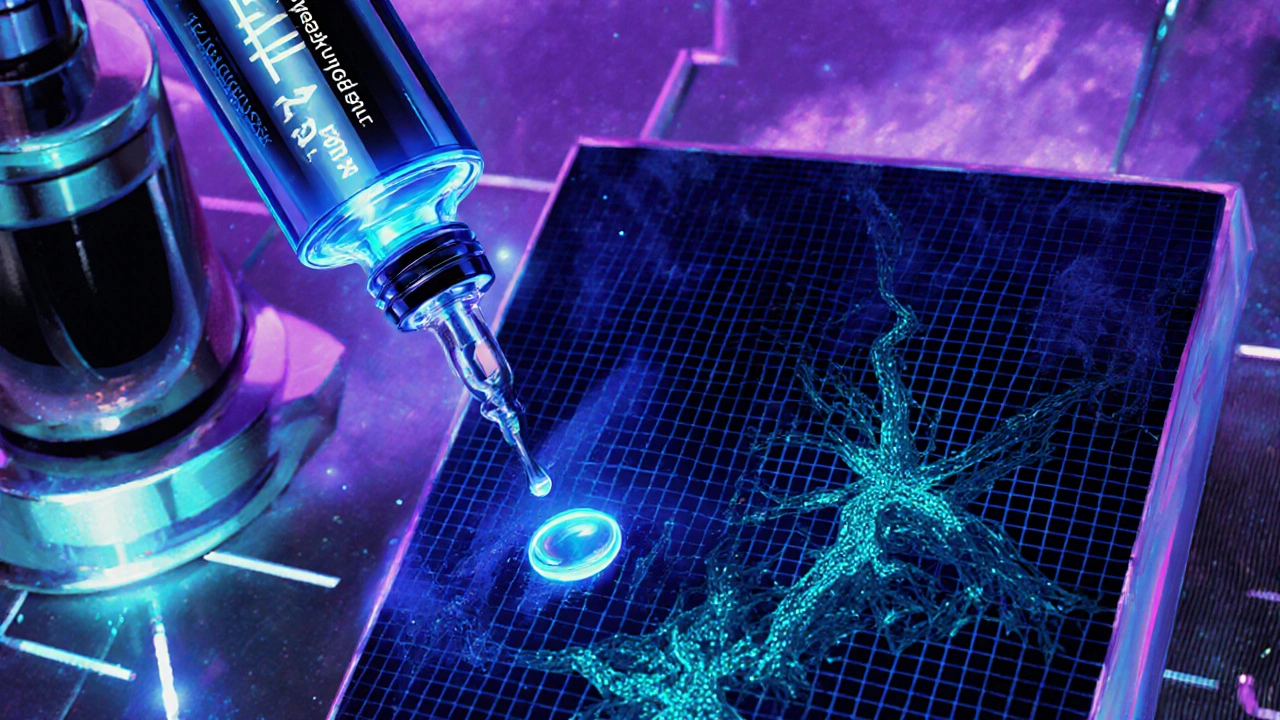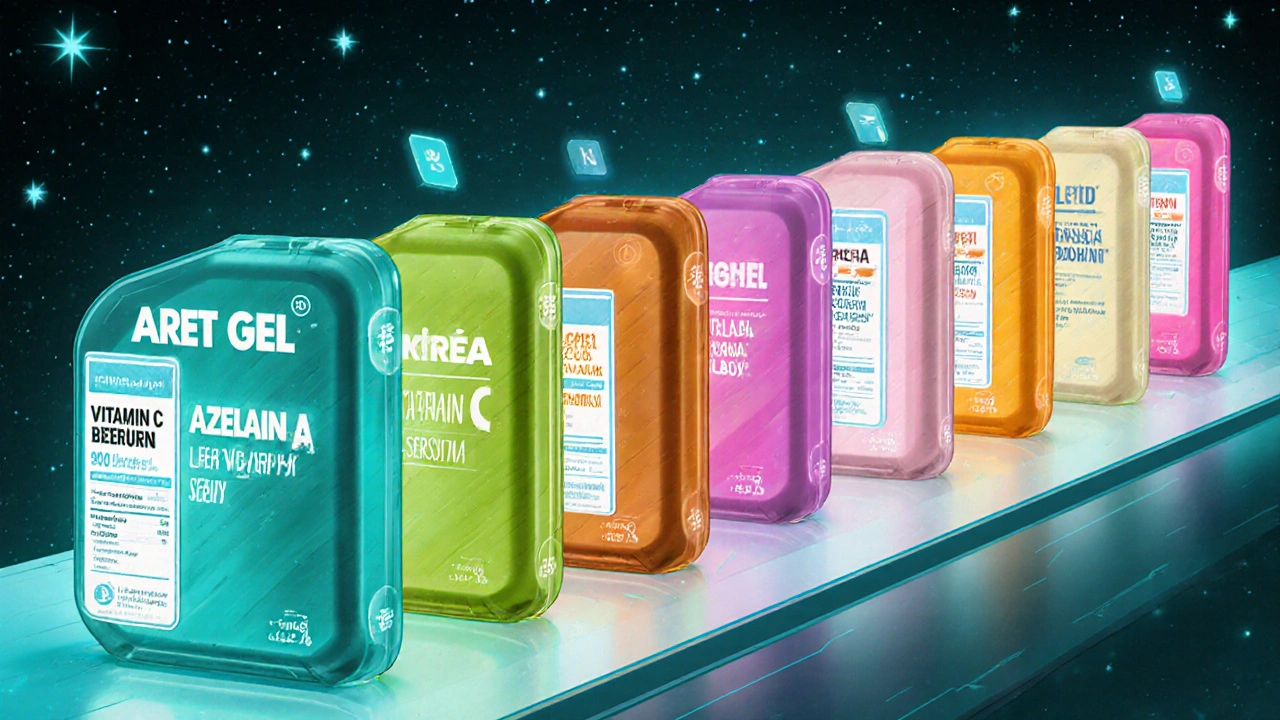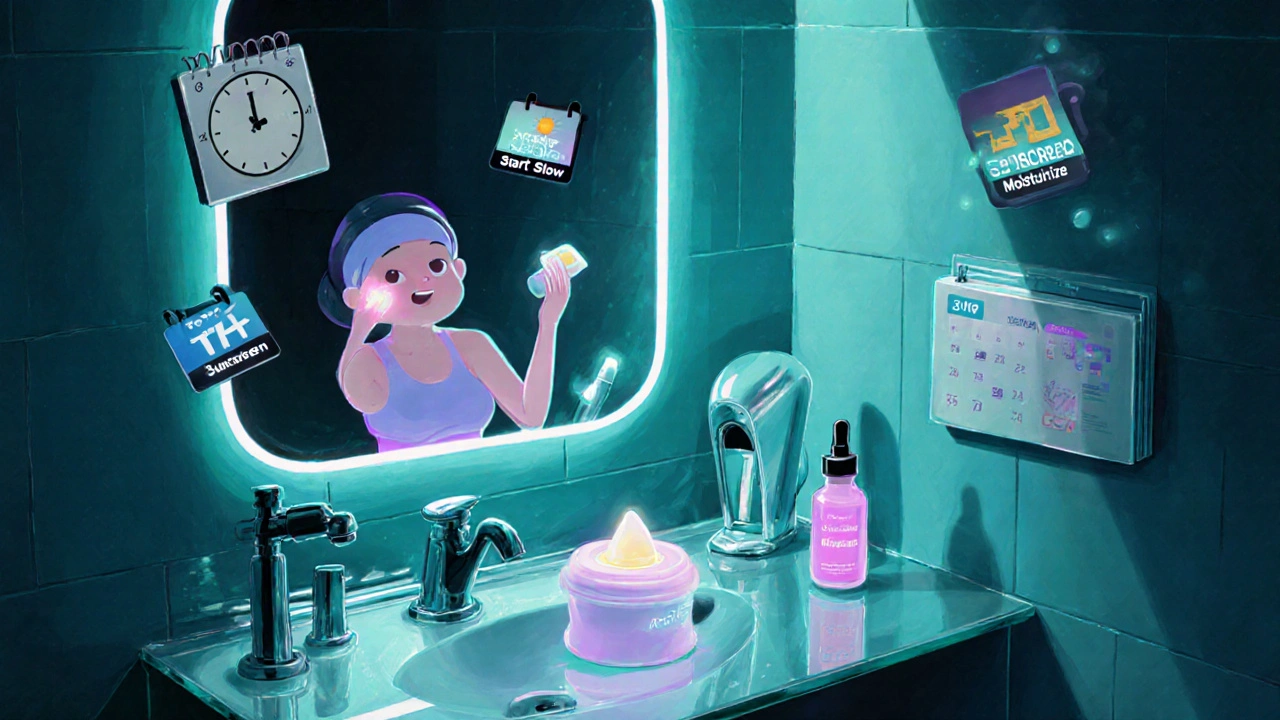A-Ret Gel (Tretinoin) vs Other Retinoids: Detailed Comparison Guide
 Oct, 18 2025
Oct, 18 2025
Retinoid Recommendation Quiz
Find Your Perfect Retinoid
Answer a few quick questions about your skin to get personalized recommendations for retinoid products that match your needs.
1. What is your skin type?
2. What's your primary skin concern?
3. How familiar are you with retinoids?
4. What's your typical budget for skincare products?
Your Personalized Recommendation
Did you know that a single drop of a topical retinoid can speed up skin cell turnover by up to 30%? That’s the power behind A-Ret Gel, the prescription‑strength tretinoin gel that dermatologists swear by for acne, fine lines, and uneven tone.
What Makes A-Ret Gel Unique?
A-Ret Gel is a prescription‑grade tretinoin 0.025% gel formulated for maximum penetration while minimizing irritation. Its gel base delivers the active compound evenly, which helps reduce the dreaded “retinoid uglies”-dryness, peeling, and redness-that many over‑the‑counter (OTC) products cause.
Because it contains pure tretinoin, A‑Ret Gel works at the cellular level to:
- Boost collagen synthesis
- Accelerate shedding of dead skin cells
- Unclog pores and reduce inflammation
The result is smoother texture, fewer break‑outs, and a brighter complexion, usually within 4‑6 weeks of consistent use.
Popular Alternatives on the Market
Not everyone can or wants to get a prescription, so a handful of OTC or lower‑strength options have become household names. Below is a quick snapshot of each.
Retin‑A is the brand name for tretinoin 0.025%-0.1% cream, the same molecule as A‑Ret Gel but in a cream base that some users find heavier.
Differin contains adapalene 0.1% (or 0.3% in the newer strength). It’s FDA‑approved for acne and is available OTC, making it a convenient starter retinoid.
Tazarotene (often sold as Tazorac) is a synthetic retinoid 0.05%-0.1% cream or gel, typically prescribed for psoriasis and severe acne.
Azelaic Acid is a naturally‑derived dicarboxylic acid (15%-20% cream or gel) that offers gentle exfoliation and anti‑inflammatory benefits, ideal for rosacea‑prone skin.
Vitamin C Serum isn’t a retinoid, but many users pair it with one for added antioxidant protection and brightening.
Niacinamide works to calm irritation and improve barrier function, often used alongside retinoids to offset dryness.

Side‑by‑Side Comparison Table
| Product | Active Ingredient | Typical Strength | Prescription? | Primary Uses | Common Side Effects | Average Price (US) |
|---|---|---|---|---|---|---|
| A‑Ret Gel | Tretinoin | 0.025% | Yes | Acne, fine lines, hyperpigmentation | Dryness, redness, peeling | $80‑$120 for 30 g |
| Retin‑A | Tretinoin | 0.025%-0.1% | Yes | Acne, photo‑aging | Similar to A‑Ret, often more irritation due to cream base | $60‑$100 for 30 g |
| Differin | Adapalene | 0.1% (OTC), 0.3% (Prescription) | Both | Mild‑to‑moderate acne | Mild irritation, dryness | $12‑$30 for 30 g |
| Tazarotene | Tazarotene | 0.05%-0.1% | Yes | Severe acne, psoriasis | Significant irritation, photosensitivity | $140‑$170 for 30 g |
| Azelaic Acid | Azelaic Acid | 15%-20% | No (OTC), Yes (higher strength) | Rosacea, acne, melasma | Slight tingling, mild dryness | $30‑$70 for 30 g |
How to Choose the Right Retinoid for You
Picking a retinoid isn’t a one‑size‑fits‑all decision. Here are three quick filters you can apply:
- Prescription vs OTC: If you have moderate‑to‑severe acne, noticeable fine lines, or want the fastest results, a prescription like A‑Ret Gel or Tazarotene will likely out‑perform OTC options.
- Skin Sensitivity: Sensitive or rosacea‑prone skin often tolerates azelaic acid or a low‑strength adapalene better than pure tretinoin.
- Budget & Convenience: Over‑the‑counter retinoids cost a fraction of prescription gels and can be ordered without a doctor’s visit.
Combine your choice with supportive ingredients-think niacinamide to calm redness or hyaluronic acid to boost hydration. This layered approach can let you start with a milder product and step up to A‑Ret Gel when your skin adapts.

Practical Tips for Using A‑Ret Gel and Its Alternatives
Regardless of the product you pick, these habits keep irritation low and results high:
- Start Slow: Apply a pea‑size amount every other night for the first two weeks.
- Use Sunscreen: Retinoids increase photosensitivity; a broad‑spectrum SPF 30+ is non‑negotiable.
- Moisturize After: Follow with a fragrance‑free cream or a hyaluronic‑acid serum to lock in moisture.
- Don’t Mix with Strong Acids: Save AHAs/BHAs for alternate evenings to avoid over‑exfoliation.
- Watch for “purging”: A short flare‑up of breakouts in the first 4‑6 weeks is normal; if it lasts longer, reassess the strength.
If you notice persistent redness or peeling beyond a few days, step down to a lower concentration or introduce a calming serum (niacinamide, ceramides) before ramping back up.
Frequently Asked Questions
Is A‑Ret Gel the same as Retin‑A?
Both contain tretinoin, but A‑Ret Gel uses a gel base that is lighter and often less irritant than the cream base of Retin‑A. The active concentration (0.025%) is the same, so efficacy is comparable; texture preference is the main difference.
Can I use A‑Ret Gel if I’m pregnant?
No. Topical tretinoin is classified as Category C and should be avoided during pregnancy because of potential fetal risk.
How does Differin compare to A‑Ret Gel for acne?
Differin (adapalene) is less potent than tretinoin but is gentler on the skin and available OTC. It works well for mild‑to‑moderate acne, while A‑Ret Gel often clears stubborn breakouts faster thanks to its stronger cell‑turnover boost.
Will I see results faster with a gel or cream?
Gels like A‑Ret Gel tend to absorb quickly and deliver the active ingredient deeper, which can speed up visible improvements for oily or acne‑prone skin. Creams may feel richer and are better for dry skin, but the timeline is similar.
Is it safe to combine a retinoid with vitamin C?
Yes, as long as you apply vitamin C in the morning and the retinoid at night. This sequencing prevents pH clashes and maximizes the antioxidant benefit of vitamin C while the retinoid works on cellular turnover after dark.
Drew Waggoner
October 18, 2025 AT 17:06Don’t be fooled by the hype; the gel will strip your skin if you don’t brace for the fallout. Expect a week of peeling that feels like your face is reborn, but barely recognizable.
Mike Hamilton
October 26, 2025 AT 18:33The skin is like a gardan, it needs both sunshine and water to thrive.
Matthew Miller
November 3, 2025 AT 21:00Alright, folks, strap in because the A‑Ret Gel is about to become your new skin BFF.
First off, the 0.025% tretinoin in a gel base slides onto oily or mixed skin like a dream.
It bypasses the sticky feel of creams and gets right to the cellular party.
Within a few days you’ll notice that old dead flakes are saying goodbye.
That “dryness” vibe is just your skin speeding up its turnover, a good kind of chaos.
Pair it with a gentle cleanser and you’ll keep the irritation in check.
Don’t skip sunscreen – retinoids love sunshine and will turn you into a lobster without protection.
If you’re worried about the “ugly” red phase, start with a pea‑size dab every other night.
Your skin will adapt and soon you’ll be reaping smoother texture and faded dark spots.
Compared to a heavyweight cream like Retin‑A, the gel feels lighter and absorbs faster.
People with acne‑prone skin often love that quick absorption because it won’t clog pores.
Budget‑wise, it sits a bit higher, but the results can outpace cheaper OTC options like Differin.
Remember, consistency is king – skip a night and you’ll see a tiny setback.
If you ever feel the burn getting out of hand, pause and throw a barrier cream on top.
In my experience, after the first month the skin looks brighter and feels firmer.
Bottom line: A‑Ret Gel is a potent tool, but treat it like a high‑octane fuel – respect the power and you’ll ride smooth.
Liberty Moneybomb
November 11, 2025 AT 23:26Everyone’s selling this “miracle gel” while the big pharma guys sit back, counting the cash from our irritated faces. They don’t want you to know that the same company funds the studies that claim it’s safe. The real agenda is to keep us chasing the next “better” formulation, never satisfied. And while we’re busy peeling, they’re planning the next marketing spin. Trust no glossy label, the truth is hidden in the fine print.
Albert Fernàndez Chacón
November 20, 2025 AT 01:53From a practical standpoint, the gel’s delivery system uses a polymer matrix that enhances dermal penetration while limiting occlusion. In lay terms, it means more active gets where it’s needed without a greasy feel. For most patients with combination skin, that balance reduces transepidermal water loss and keeps the barrier intact. So if you’re weighing cost vs benefit, think of the gel as an efficiency upgrade rather than a pure luxury.
Stephanie Zaragoza
November 28, 2025 AT 04:20Indeed, the polymer‑based gel, while technically sophisticated, offers a straightforward advantage: it minimizes the potential for comedogenic fallout, thereby preserving pore clarity; additionally, its low‑viscosity formulation, when paired with a ceramide‑rich moisturizer, supports barrier restitution, which is crucial for patients prone to erythema; finally, the cost differential, although noticeable, is justified by the reduced need for adjunctive therapies, ultimately streamlining the treatment algorithm.
Janet Morales
December 6, 2025 AT 06:46Oh please, you’re all acting like this gel is the holy grail, when in reality a simple over‑the‑counter retinoid does the job for the majority. Stop buying into the hype and save your money for something that actually works without turning your face into a desert. If you think higher price equals better results, you’ve been duped.
Rajesh Singh
December 14, 2025 AT 09:13While it’s true that not everyone needs a prescription strength retinoid, we must also consider the ethical responsibility of providing effective treatment to those who truly suffer from severe acne or photo‑aging. Encouraging patients to start with gentler OTC options is sensible, yet dismissing higher‑potency formulas outright can deny them faster, clinically proven outcomes. The moral balance lies in informed choice, not blind allegiance to cost. Ultimately, each individual should weigh benefit, risk, and accessibility before deciding.